Where milk and honey grow
Have you ever eaten a fresh coconut? Drank the clear liquid right from the fruit, and scooped out the soft white flesh with a spoon? Have you ever savored the taste of ripe papaya, so sweet and soft that it almost melts on your tongue? Papaya, pineapple and passion fruit alone are reason enough to come to the Amazon. But have you heard of granadilla, lulo or guanábana as well? Or caimo, a yellow fruit the size of an orange, whose creamy white filling has the taste of sweetened condenesed milk? This is quite literally a land where milk and honey grow.
As much as I love to try those fruits and juices, as much do I want to learn about the plants providing them. There are so many trees and vines and palms and ferns I’ve never seen before – tell me more about them! Much has been written about the amazonian biodiversity, but no scientific lecture conveys what it means to see, smell, taste and touch this waste variety of life. If you are even the least bit interested in botany, the Amazon will amaze you. I was lucky to have an uncle who early woke my interest for the world of plants, and therefore I am thrilled to discover all those wonders that surround me. I wish I could share them with him.
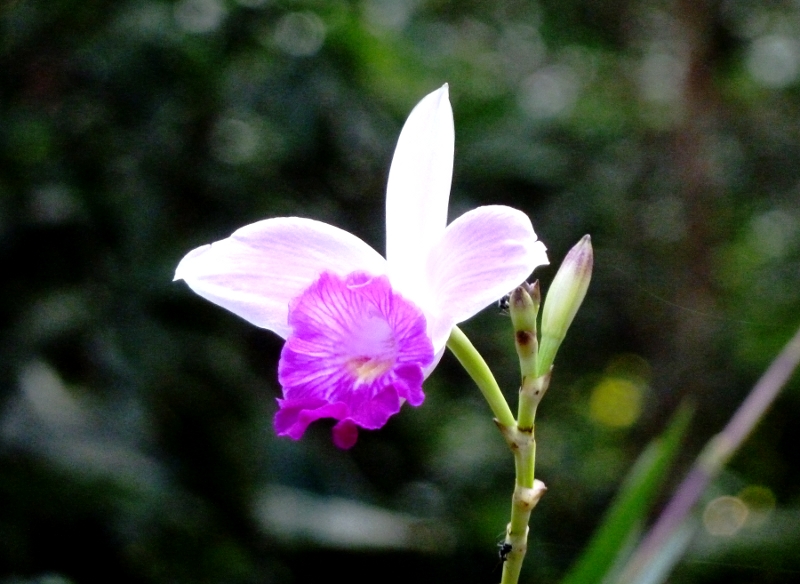
So far, I have visited two very different nature reserves in my region. The first one was the touristic and cultural center Ágape, located at “the kilometers” outside of town. It is a center that gives groups of tourists or students a great opportunity to learn more about the life at la Selva. Ágape has no connection to the electricity or water grid of the town, but has its own well that provides it with water, whilst the food is cooked over the fire on a giant grill. Visitors can hold their meetings in the traditionally round conference room, sleep in the hammocks or beds in the largest of the wooden houses, and are led around the jungle by their hosts. Moreover, the center serves as an important point of contact between the town of Leticia and the indigenous communities living nearby in the jungle. A good friend of mine is currently working at Ágape, supporting its management, but also bringing in many great ideas of how to make the center even more attractive in terms of environmental education. When I first joined her on one of her visits, her boss took us with him, showing us the paths of the reserve. For me, it was the first time I have ever walked through the jungle.
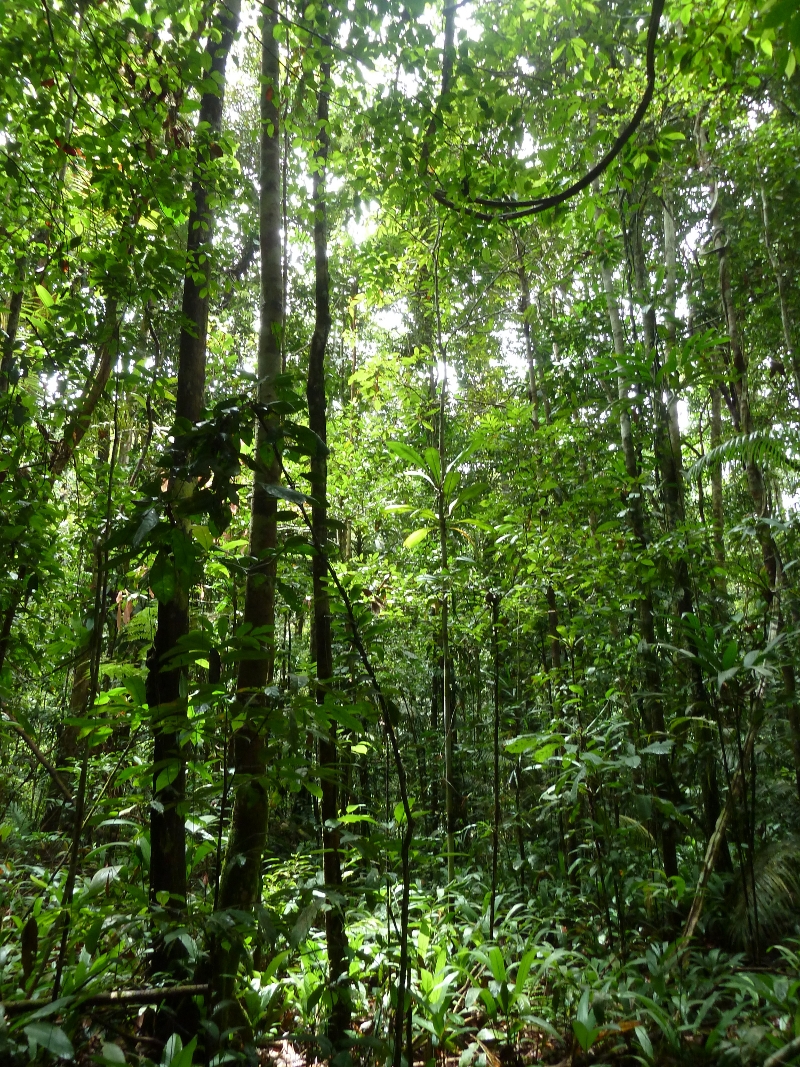
La Selva is green, incredibly green. The air is warm and humid, and buzzing with sounds. You can hear the jungle, all its crickets, frogs and birds. If you are lucky, you will spot a beautiful big blue butterfly fluttering by, or see a hummingbird hovering in the air beside you. But most animals remain hidden from your eyes. What you can see are the plants of the jungle, and more plants under and on and in between them.
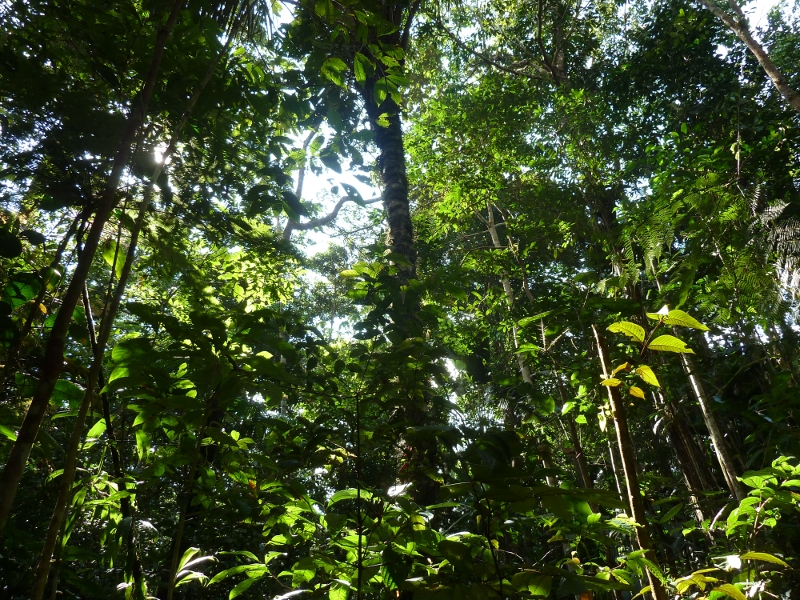
Let me start with the trees around you, stretching their stems straight up towards the sun. One is called carana, a palm tree covered in thorns the length of a finger, whose dried leaves can be weaved into mats that are used for the roofs of houses. Another is called renaco, a tree that forms wooden walls between the different compartments of his lower stem. Beating those wooden panels with a stick might save your life if you ever get lost in the jungle, producing a sound that can be heard for many miles. Then there is the famous pona caminanda, a palm tree actually walking on its wooden legs. One tree has roots like striped red snakes, another has seeds that look little soft round brushes. There are trees of any sort and size and shape you can imagine.
Yet there is far more than just trees to be found in la Selva. Every available surface, every sort of space is colonized by something green and growing. Layers and layers of vegetation compete for sunlight, forming the magnificent maze of the jungle. There are banana plants with leaves as large as blankets, and ferns taller than a grown-up man. Flowers are growing on the trees above you, lianas stretching far from branch to branch. There are plants with fruits or nuts or roots that can be eaten, and others used for arts or crafts or both. Some of them are common in the region, others barely known.
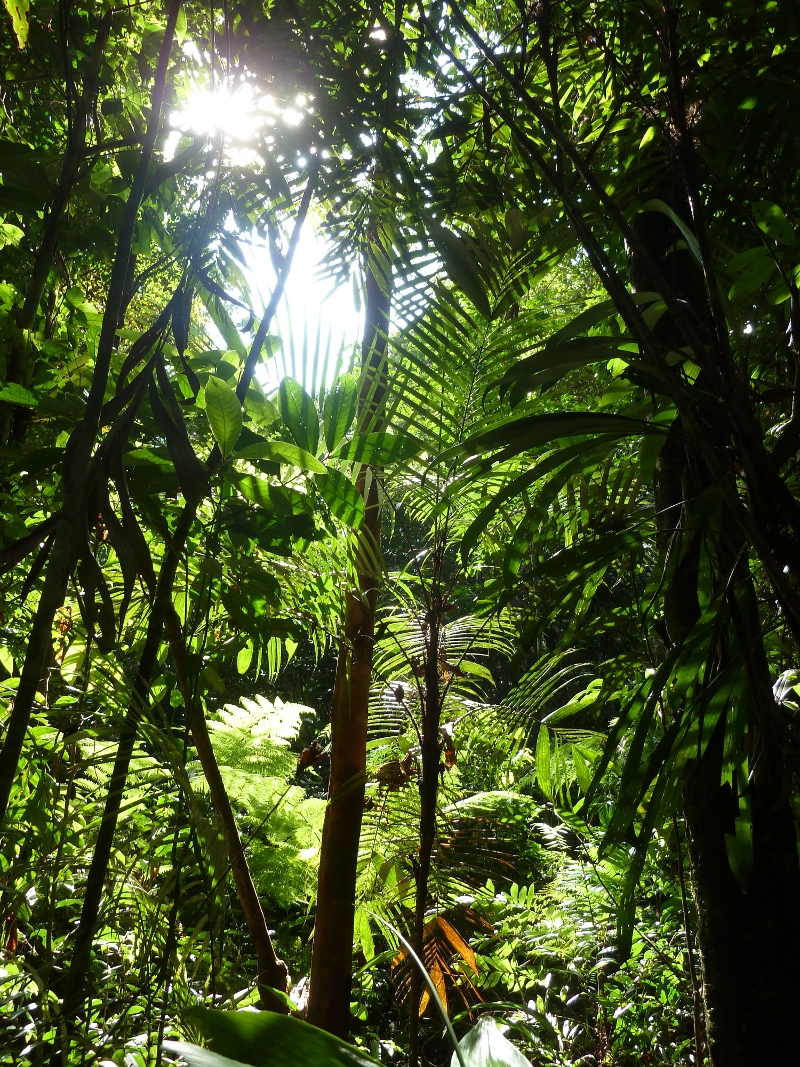
For me, visiting Ágape was something magical. There is so much yet to discover! I can’t wait to return to la Selva, to see more of the secrets hidden in this sea of green.
Next time, I will use more mosquito repellent.
I did learn some more about the plants of the Amazon just about two weeks later, when I visited my second nature reserve at the kilometers. This time, I followed the invitation of some new friends from the university. They live at Cerca Viva, a reserve founded by six families who bought a piece of land and transformed it into a piece of paradise.
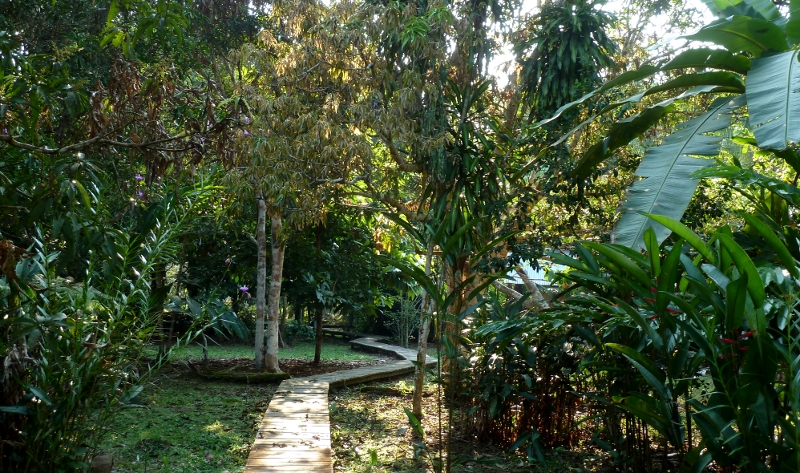
Almost every plant that grows there can be eaten – at least some parts of it. There are pineapple and banana and coconut that I easily recognize, but also some trees I first got to know here in Amazonia, such as the copoazu whose fruits are almost as big as my head already, and the pomarrosa tree with its pretty pink petals. The most interesting, however, where the plants that were completely new for me. My friends let me try chontaduro, a small orange fruit the size of a walnut which tastes a little like pumpkin, and uva caimarona, a very tasty kind of white grape with a purple peel. The weirdest taste was that of the Umarí, an egg-sized fruit of which only the outermost orange part is eaten. Its taste is neither bitter nor sweet, and not actually unpleasant, but certainly different from anything I have ever eaten before.
The most delicious, of course, was the caimo fruit. We must have spent about an hour standing there beneath the caimo tree, watching the sun set slowly, sweet juice sticking to our faces and fingers, as we enjoyed the taste of milk and honey.
Those seem to be two different worlds – the tamed fruits and aliments planted in parks and gardens versus the wide wilderness of the jungle. And yet it is the combination of the two that forms the nature of the region here. For many thousand years, la Selva has been inhabited by men and women growing crops, selecting certain species and shaping their environment in order to survive. According to some scientists, nature untouched by human influence does not exist at all.
To me, it seems that those two worlds - whether apart or interwoven - bear many wonders. I am looking forward to finding out which further adventures await me here.